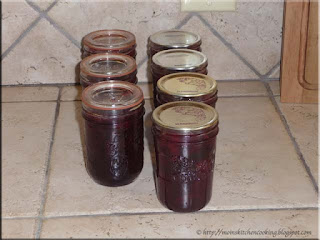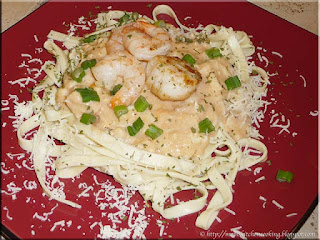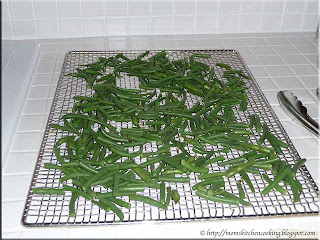I have talked so much on this blog about canning. The reason being home canning is a huge part of our lives. Home canning allows us to keep our food costs low, gives us unique products you could not buy in stores and the products are healthier, not laden with extra preservatives, or artificial colours and flavours. It is our way of taking responsibility for our own safe food supply as well as preserving the bounty of the harvest. It is also a way for us to share our blessings with family and friends.
Everyone who home cans is familiar with the single use metal snap lids.
These are the only lids currently approved by the USDA but only because
those companies paid big bucks for the endorsement. A metal snap lid
is sealed if the center of the lid is indented so it gives a nice visual
along with a ping to let you know the lid is sealed. There are three
problems with the metal snap lids. First, they can result in false
seals because the natural tendency is to touch the lid to see if it is sealed which may push it down creating a false seal. The second problem is these lids really are disposable meaning they are not eco-friendly. In some areas, they can be put into the recycle bin but in other communities they end up in the landfill. The third problem is the metal lids are coated with a plastic containing bis-phenolA (BPA) so they present a potential health risk. High acid foods (eg. jams, jellies, pickles, fruits) processed in a boiling water bath canner (BWB) are not likely to come into contact with the coating so BPA leaching into the food is low risk. Those low acid foods (eg. vegetables, meats, soups, dried beans, and some tomato products) will come into contact with the coating during processing resulting in trace amounts of BPA in the food, although it is much lower in concentration than any commercially canned foods.

I have been experimenting with re-usable canning lids to circumvent the BPA issue while becoming more eco-friendly. While I still use the metal snap lids for any product given away, I am using Tattler re-usable plastic BPA free lids and glass inserts. When you put a metal lid on the jar, you tighten finger tight then process. When you put a Tattler on, originally the instructions were to tighten finger tight then turn back a quarter inch but now it is to tighten finger tight. When you put a glass insert on, you tighten fully then turn back a quarter inch. Immediately out of the canner, the rings of both must be tightened fully.
Here is strawberry jam fresh from the canner. Note the difference in the bands? Now that can be a problem with the glass inserts. Boiling water rests between the lid and the band so you can burn yourself trying to tighten the band. Make sure you use a thick towel.
Pictured is the jam jars cleaned with rings removed ready for storage. I really like my Tattler lids, seriously I do. However, I love my glass inserts! I have 14 jars with glass inserts in storage without one seal failure and the jars just look gorgeous! In comparison, it depends on what I am canning but I have a seal failure rate of about .1% with Tattlers and about the same with metal lids, maybe a bit more if I hit a bad box of lids. False seals are not an issue with the Tattlers or glass inserts. They are either sealed or they aren't. If the lid is not sealed it lifts off with no resistance as soon as you remove the band.
Be warned, unlike the Tattler and metal lids, the glass lids will break. They are difficult to find especially the rubber gasket that is no longer in production. They are considerably more expensive as they are vintage lids. On average I have paid $1.50 per lid with gasket in comparison to Tattler lids at 82¢ and Bernardin metal snap lids 14.5¢ each. Both Tattler and Bernardin lids are still in production but that might not be the case in the future. For that reason, I continue to increase my stock of all three types of lids.
This batch of strawberry jam was made using Redpath QUICKSET™ for jam. This is not a product I have used before and normally would not buy. The 1 kg package contains sugar, citric acid and pectin mixed together. The current price is $2.99 but a local grocery store recently had it on sale for $1 as part of their dollar sale. At the regular price, it is more expensive than Pomona's pectin and Certo crystals but less expensive than Certo liquid per batch of jam. It may work out slightly cheaper per batch considering the sugar is included in the price whereas sugar is in addition to the cost of the other pectin. Current sugar prices range from 10¢ to 17¢ per cup depending on where you buy it. Using the Redpath QUICKSET™ is no easier to use than using Certo or
Pomona's. It removes measuring the sugar but increases the boil time by
3 minutes. The set is comparable to other pectin.
Method:
Wash and hull the strawberries. Crush the fruit and measure out 3½ c of crushed fruit into large saucepan. Add 2 tbsp lemon juice and the entire bag of Redpath QUICKSET™. Mix well. Bring to a full rolling boil [Add ½ tsp butter to prevent excess foaming. (optional)] and boil for 4 minutes stirring constantly. Remove from heat. Continue to stir for 5 minutes to prevent floating fruit. Ladle into hot jars. Wipe the rim and place lids on the jar. Tighten band according to the type of lid being used. Seal -> This means to process in a BWB canner for 10 minutes. Remove from canner. Let sit undisturbed for 24 hours. Check seal. Label and store.
 Kitchen appliances have come a long way from those of our parents. While I am sure they were concerned about energy usage especially if heating or cooking with wood because let me tell you, that is a lot of work, in today's world we are dealing with energy conservation concerns. The modern kitchen is a mecca of both large and small kitchen appliances, all demanding their use of electricity or hydro. That means the frugal homemaker has to decide between the best and lowest energy usage for any appliance he or she is purchasing. Surprisingly, there is a trend among frugalistas to buy non-electric appliances, and that is certainly an option for small kitchen appliances. However, with large kitchen appliances you are still left with wood, natural gas, hydro and propane. We specifically chose to go with a natural gas range when we bought this house because here in our little corner of the world, natural gas is about a third of the price of hydro. For the amount of cooking we do, buying a natural gas range has pretty much paid for itself and we haven't been here 2 years yet.
Kitchen appliances have come a long way from those of our parents. While I am sure they were concerned about energy usage especially if heating or cooking with wood because let me tell you, that is a lot of work, in today's world we are dealing with energy conservation concerns. The modern kitchen is a mecca of both large and small kitchen appliances, all demanding their use of electricity or hydro. That means the frugal homemaker has to decide between the best and lowest energy usage for any appliance he or she is purchasing. Surprisingly, there is a trend among frugalistas to buy non-electric appliances, and that is certainly an option for small kitchen appliances. However, with large kitchen appliances you are still left with wood, natural gas, hydro and propane. We specifically chose to go with a natural gas range when we bought this house because here in our little corner of the world, natural gas is about a third of the price of hydro. For the amount of cooking we do, buying a natural gas range has pretty much paid for itself and we haven't been here 2 years yet. 





















